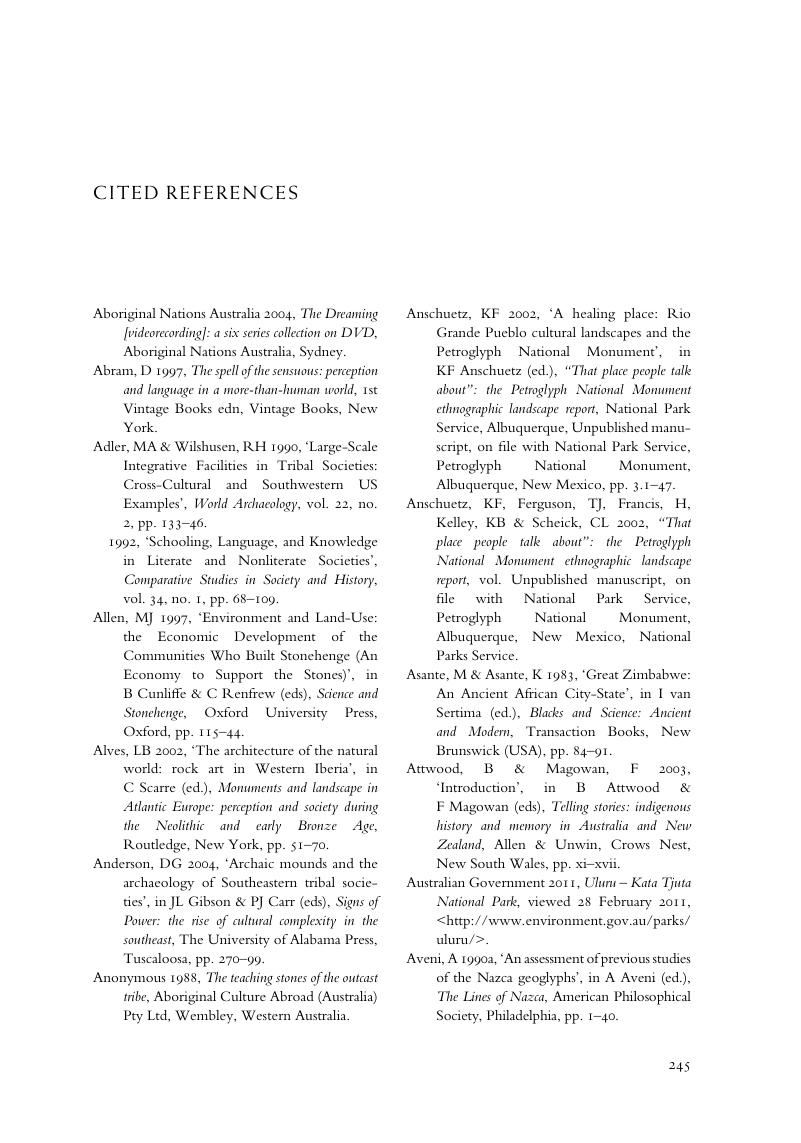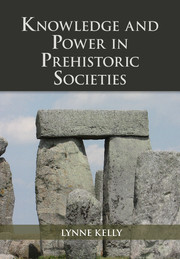Book contents
- Knowledge and Power in Prehistoric SocietiesOrality, Memory and the Transmission of Culture
- Knowledge and Power in Prehistoric Societies
- Copyright page
- Dedication
- Contents
- Illustrations
- Book part
- Preface
- Chapter One Primary orality in the archaeological context
- Chapter Two Knowledge and power in oral cultures
- Chapter Three Primary orality and oral mnemonic technologies
- Chapter Four Material mnemonic technologies
- Chapter Five Animal and plant knowledge in oral tradition
- Chapter Six Time and space
- Chapter Seven Case study: the Yolngu system of knowledge
- Chapter Eight Case study: the Pueblo system of knowledge
- Chapter Nine Chaco Canyon in the Ancestral Puebloan context
- Chapter Ten Poverty Point in the North American Archaic context
- Chapter Eleven Stonehenge in the British and Irish Neolithic context
- Chapter Twelve Conclusions
- Notes
- Cited references
- Index
- References
Cited references
Published online by Cambridge University Press: 05 June 2015
- Knowledge and Power in Prehistoric SocietiesOrality, Memory and the Transmission of Culture
- Knowledge and Power in Prehistoric Societies
- Copyright page
- Dedication
- Contents
- Illustrations
- Book part
- Preface
- Chapter One Primary orality in the archaeological context
- Chapter Two Knowledge and power in oral cultures
- Chapter Three Primary orality and oral mnemonic technologies
- Chapter Four Material mnemonic technologies
- Chapter Five Animal and plant knowledge in oral tradition
- Chapter Six Time and space
- Chapter Seven Case study: the Yolngu system of knowledge
- Chapter Eight Case study: the Pueblo system of knowledge
- Chapter Nine Chaco Canyon in the Ancestral Puebloan context
- Chapter Ten Poverty Point in the North American Archaic context
- Chapter Eleven Stonehenge in the British and Irish Neolithic context
- Chapter Twelve Conclusions
- Notes
- Cited references
- Index
- References
Summary

- Type
- Chapter
- Information
- Knowledge and Power in Prehistoric SocietiesOrality, Memory and the Transmission of Culture, pp. 245 - 266Publisher: Cambridge University PressPrint publication year: 2015

